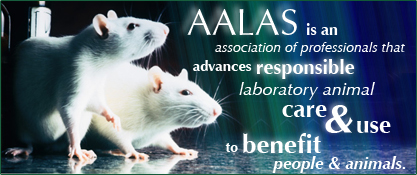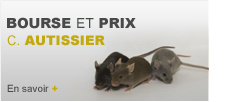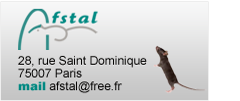Federation of European Laboratory Animals Science Associations (FELASA)
FELASA, the Federation of Laboratory Animal Science Associations, represents common interests in the furtherance of all aspects of laboratory animal science (LAS) in Europe and beyond. Membership is open to LAS associations of nations of Europe.
International Council for Animal Laboratory Science (ICLAS)
ICLAS is an international scientific organization dedicated to advancing human and animal health by promoting the ethical care and use of laboratory animals in research worldwide.
American Association for Laboratory Animal Science (AALAS)
Association for Assessment and Accreditation of Laboratory Animal Care (AAALAC)

AAALAC International is a private, nonprofit organization that promotes the humane treatment of animals in science through voluntary accreditation and assessment programs.
Groupe Interprofessionnel de Réflexion et de Communication sur la Recherche (GIRCOR)
Le Gircor (Groupe Interprofessionnel de Réflexion et de Communication sur la Recherche) est une association sans but lucratif créée en 1991 qui réunit les scientifiques, de la recherche publique et privée amenés dans leurs travaux à avoir recours à l'expérimentation animale.
European College of Laboratory Animal Medecine (ECLAM)
ECLAM is the veterinary college within Europe for the speciality of laboratory animal medicine, and like other veterinary speciality colleges is overseen by the European Board of Veterinary Specialisation
European Society of Laboratory Animal Veterinarians (ESLAV)

The European Society of Laboratory Animal Veterinarians (ESLAV) gives veterinarians a forum to discuss issues which concern them, in the field of laboratory animal science, in general and in Europe specifically. The society's objectives are to promote and disseminate expert veterinary knowledge within the field of laboratory animal science
Conseil Canadien de Protection des Animaux (CCPA)
Le Conseil Canadien de Protection des Animaux a édité un certain nombre de normes, directives et lignes directrices qui sont directement accessibles en ligne.
Institut National de la Santé et de la Recherche Médicale (INSERM)
Site de l'INSERM dédié à la recherche pré clinique.
Centre National de la Recherche Scientifique (CNRS)
Site du CNRS dédié à l'expérimentation animale.
Institut National de la Recherche Agronomique (INRA)
Site de l'INRA sur les conditions d'exercice de l'expérimentation animale.
International Society for Transgenic Technologies
The “International Society for Transgenic Technologies (ISTT)” is a non-profitmaking Society, with the following aims:
- to foster and encourage knowledge generation, discussion, training and education, and the diffusion of the technologies and specific research used for the genetic modification of animals, in particular those aimed at generating and/or analysing transgenic and mutant animals as particularly useful experimental models in the biology, biomedicine and biotechnology disciplines,
- to act as a meeting point and debate forum for all professionals and students in the field, including scientists and specialists, personnel from relevant companies and, in general, any individuals with an interest in the generation and/or the analysis of transgenic animals.
ROCAD ( Réseau Opérationnel de Centres pour faciliter l'Accès et la Distribution des modèles souris)
Le réseau ROCAD regroupe plusieurs structures nationales d'affiliation IBiSA ou qui travaillent de concert depuis plusieurs années. L'objet de cette démarche est de mettre en place, avec des moyens complémentaires, une standardisation et une optimisation des ressources et des compétences existantes au bénéfice de la communauté scientifique. Depuis sa création en 2006, le réseau n'a cessé de s'agrandir et fédère à ce jour près de 40 centres de recherche, laboratoires ou animaleries représentés par 80 à 100 personnes.










